Plants chosen
The plants I chose are the prickly pear cactus, a magnificent plant in my house, and a fern.
Prickly Pear Cactus
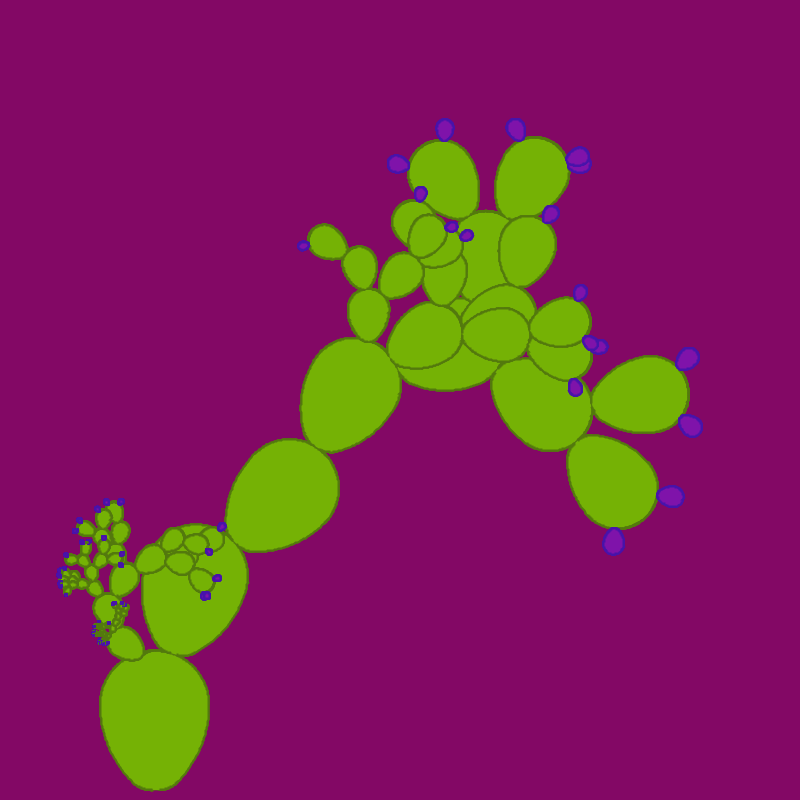

I chose the prickly pear cactus because my roommate had just harvested some and made a really yummy jam out of the pears. This picture is from Zion National Park, but the actual cactuses I modeled are all over Albuquerque, holding up plenty of ripe deep purple prickly pears. This is what they look like when they are in flower before they go to fruit. I had a couple different ideas about how to model the pads. I first thought I could model the branching structure with lines and then have the turtle draw pads around all of the lines, but this proved difficult because I struggled figuring out how to get the turtle to draw a pad that had a length the same size of the line. Then I tried just drawing ellipses, using the vertices of the lines and translating and rotating the coordinate plane, but I had a lot of issues with that too. Earlier I had figured out how to draw the pad shape with turtles – I drew several arcs with different sizes so that the curvature of the different arcs would yield this tapered pad shape. I decided to abandon lines all together and make F code for drawing a pad rather than drawing a line. The turtle starts at the top center of the pad and ends back there as well. Then, + and – code for following the arc on top for the angle parameter, plus or minus a few extra degrees. This creates 1-3 (depending on which option F gets replaced by) spots with an X along the top arc of the pad, where prickly pears will be drawn (just smaller, purple pad functions) and where the next pads in the next iteration will appear. This ended up working really well and I’m super happy with the results. This is the plant that I used for my fabrication as well.
House Plant
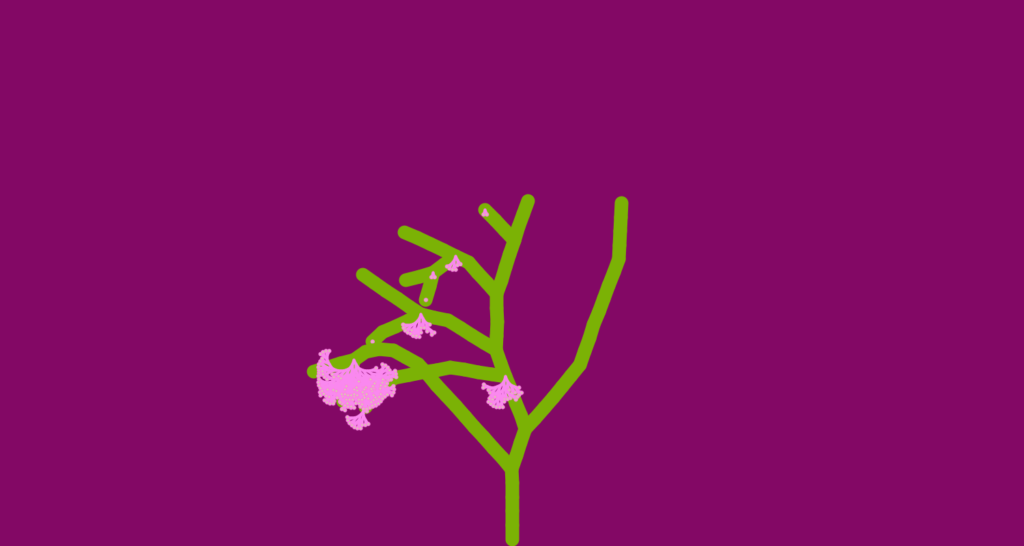
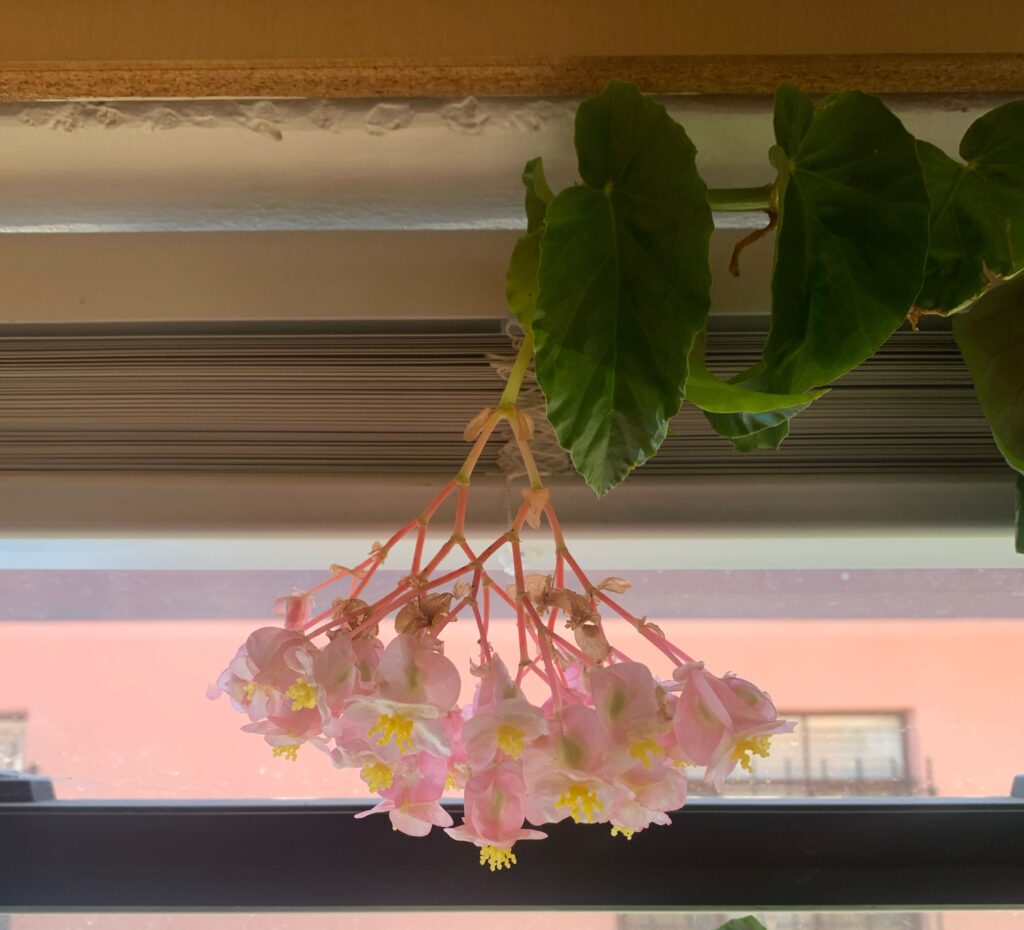
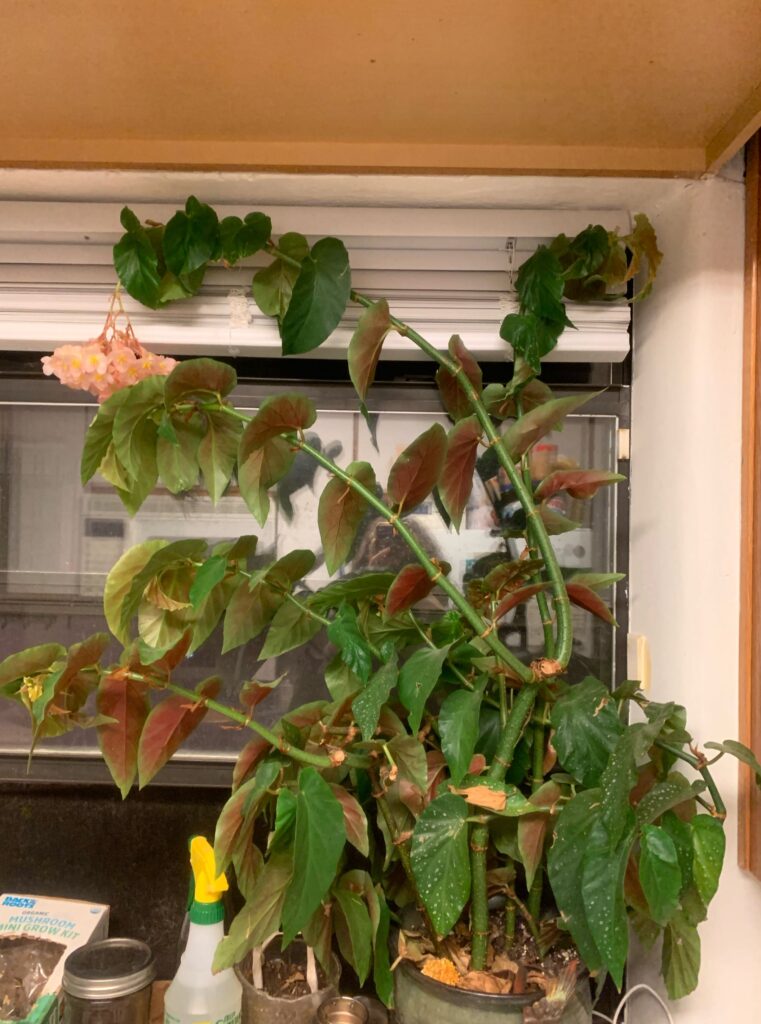
This is a house plant that the same roommate who made the pear jam brought home. We’re not sure what is is but it’s my favorite plant I’ve ever had – pink and green is a color combination that I have been loving recently and this plant displays so many pinks and greens beautifully. The deep pinks on the back sides of the leaves, the light green spots, the pale pink flower structure with light green seeds. This plant also gave me some troubles, as I wanted to create to separate L systems – one for the green part of the plant and one for the flowers, because they have two distinct L systems. And then I needed to figure out how to attach them. I figured out the curve patterns for the plant but it was difficult sometimes to prevent it from curving too far and wrapping below the plant, but this usually only happens when you get to the larger iterations. The flowers also posed a bigger problem than I thought, as it was difficult to get the flower bunches to stay at the end of the branches. There’s still some flower bunches at branch points but I think it still looks nice.
Fern
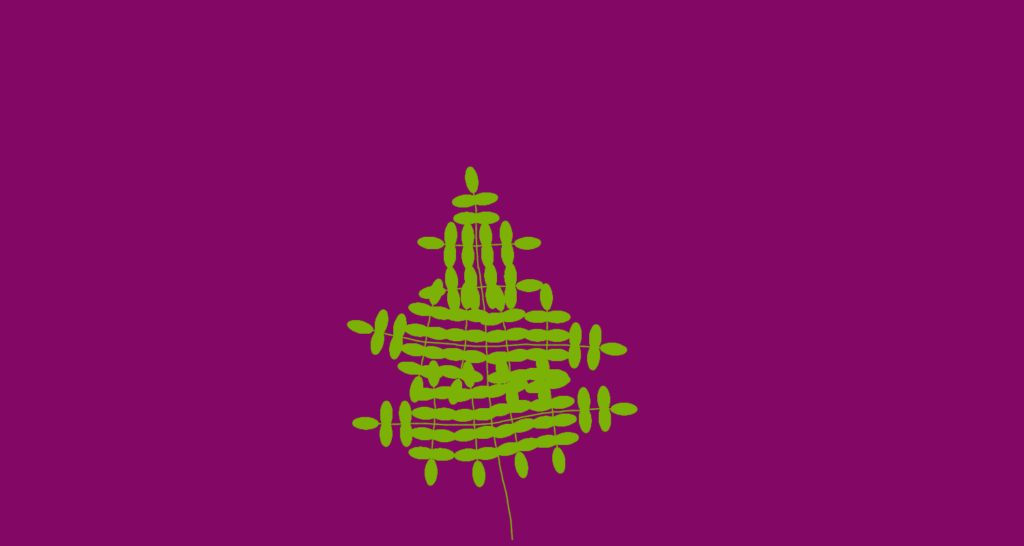
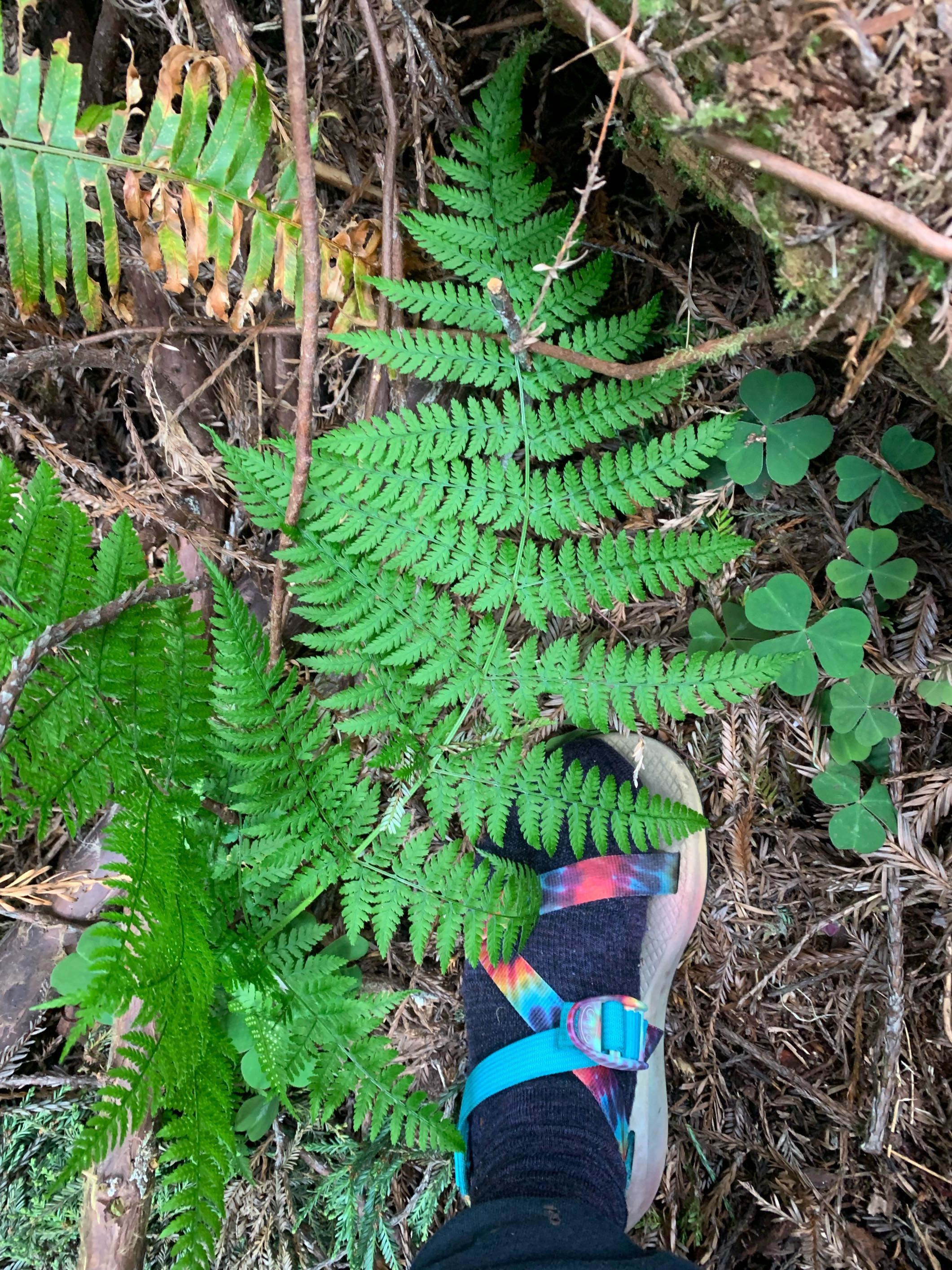
I chose to try a fern because I noticed their fractal-y leaf growth when I saw a bunch of giant ferns in the Pacific North West this summer. I tried to replace each ellipse with another stem with six more ellipses on it (ellipses drawn by the turtles to avoid having to translate and rotate). I struggled with getting the ellipses to get smaller as they split, but it was causing problems since it has to be every other branch, and when I would scale them down by a factor they kept getting too small too fast. So I ended up leaving them the same size, but I still like how much they overlap and still create a similar pattern, especially after introducing some randomness of the angles.
My code
Fabrication

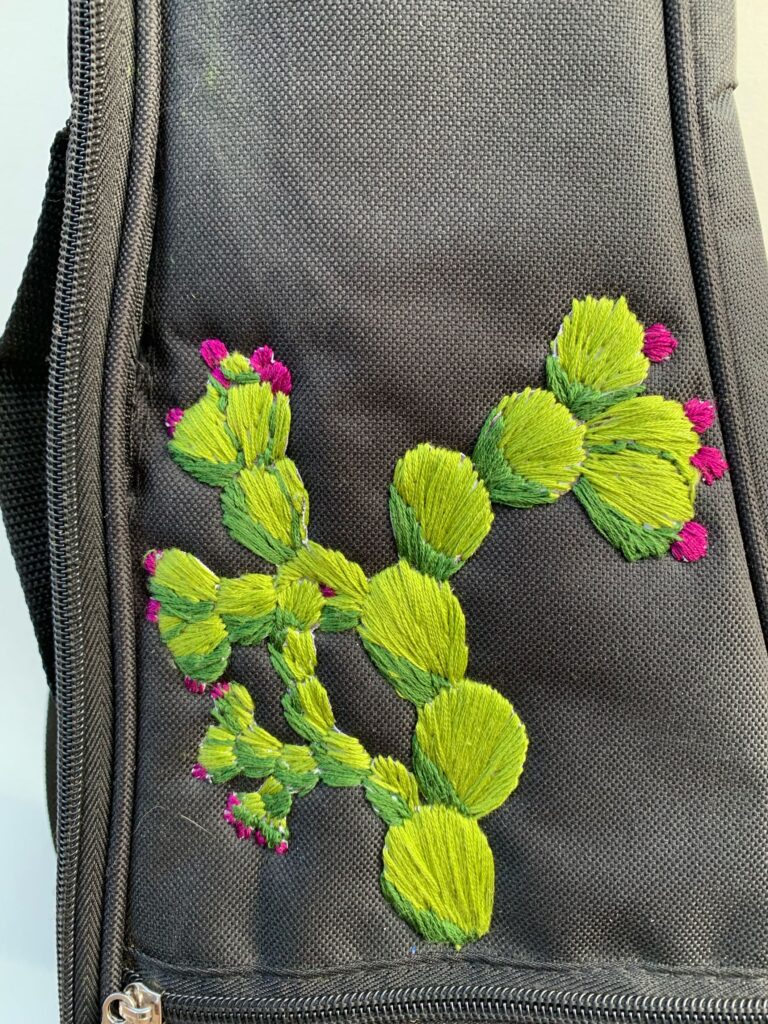
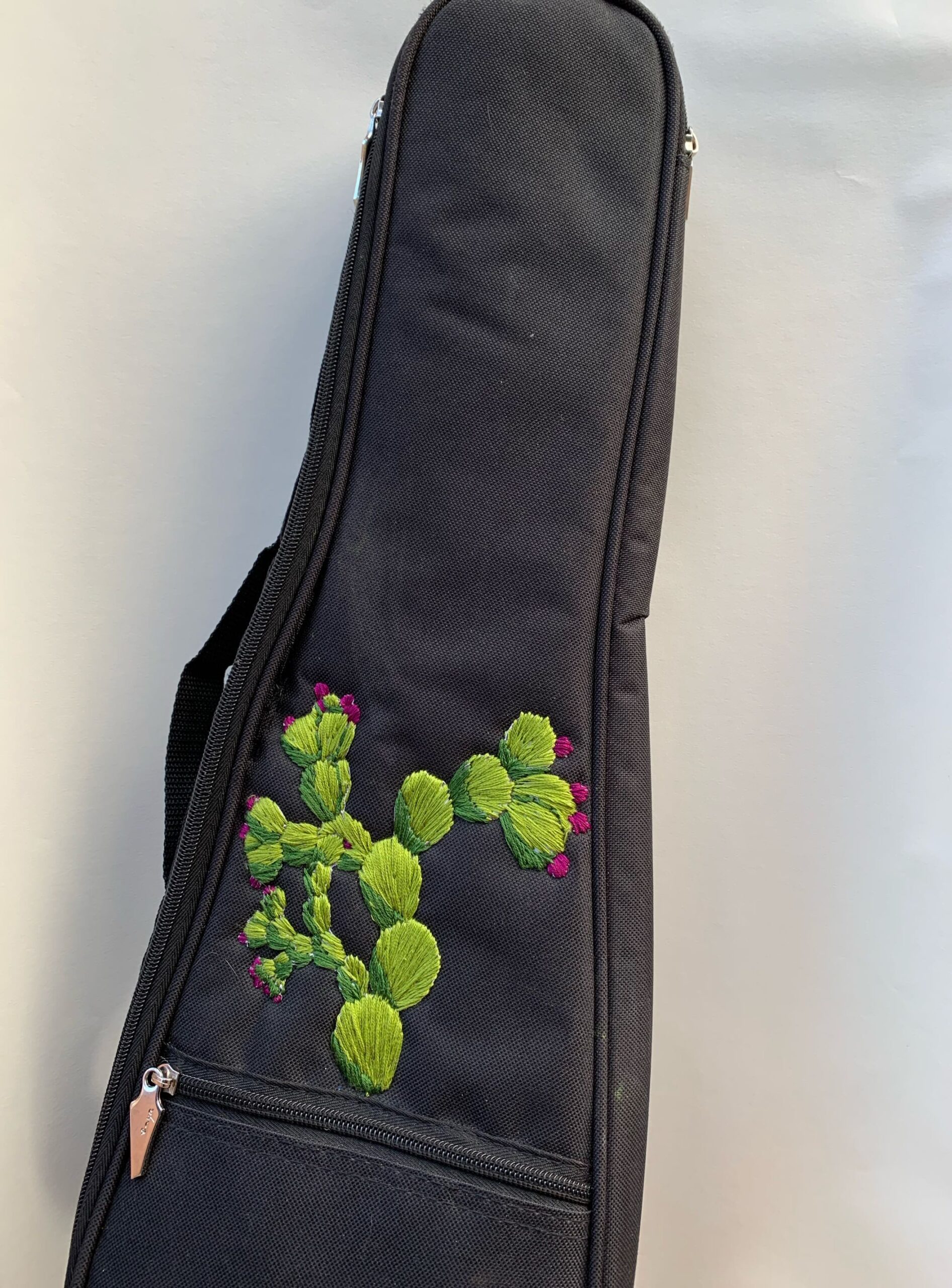
I decided to make an embroidery stencil of the cactus pads and embroider the cactus onto my ukulele case. Initially, I wanted to cut the pattern out of felt with the glow forge, but I ended up getting sick and then having too much work to be able to get into the lab when they were open. So I thought I could use the ink jet printer and try the cloth printing. I figured I would paint it and maybe embroider some parts since I got the sew on. But then I decided I didn’t want the black lines to show so I decided that I would just embroider the whole thing. I’ve never embroidered before, and I grossly underestimated how long it would take. It ended up taking around 12 hours to embroider by hand, and I definitely stabbed myself a few times, but I’m happy with how it looks. So embroidering actually ended up taking more time than just going in to do the laser cutter. In the future I would prefer to to use the laser printer, or the embroidery machine. But I actually was pretty inspired by Rogan Brown who does the paper cuttings. I liked how he combined computer fabrication with hand craft, so I’m happy I got to combine them as well. Below are more pictures of my process.
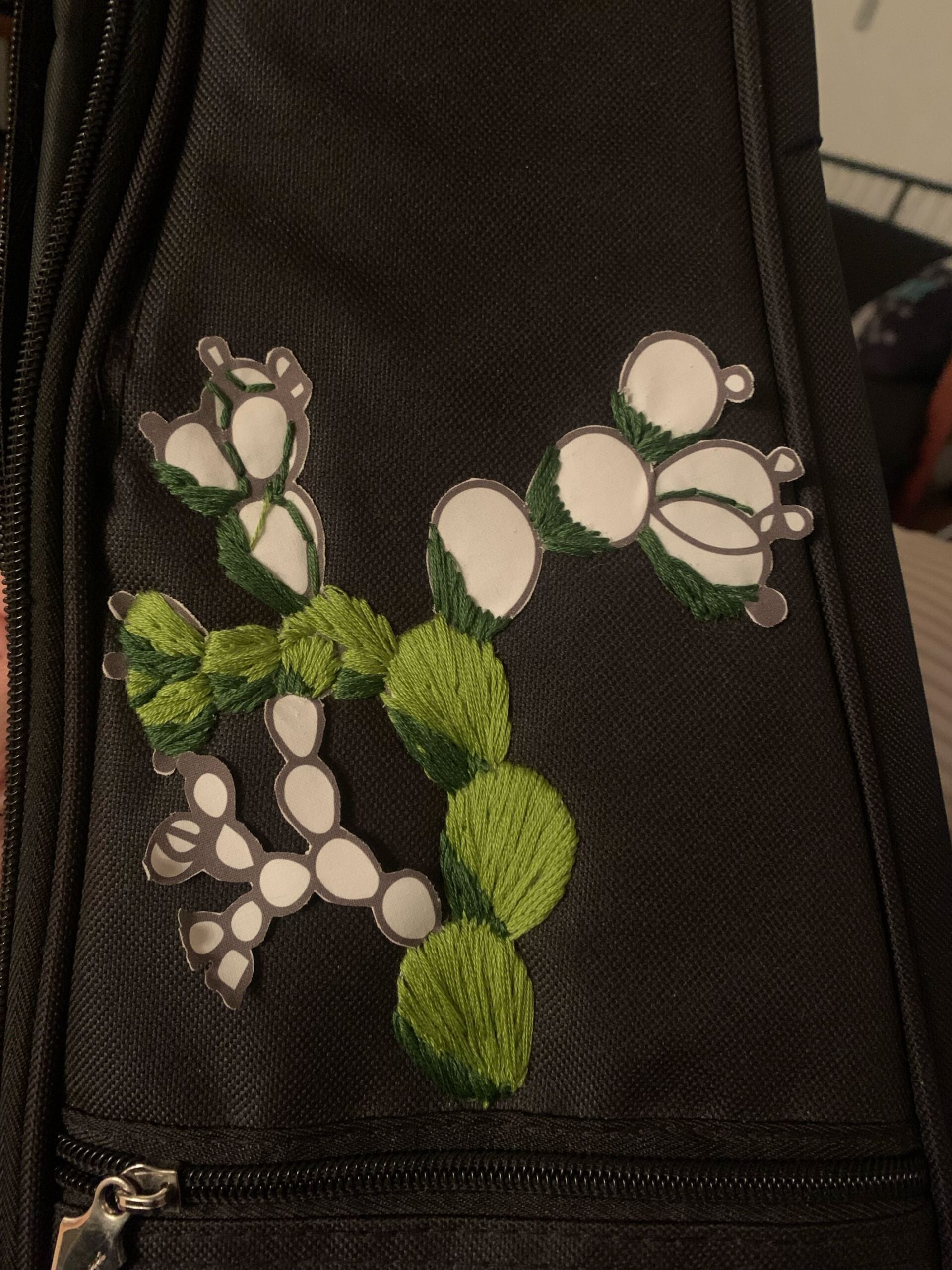
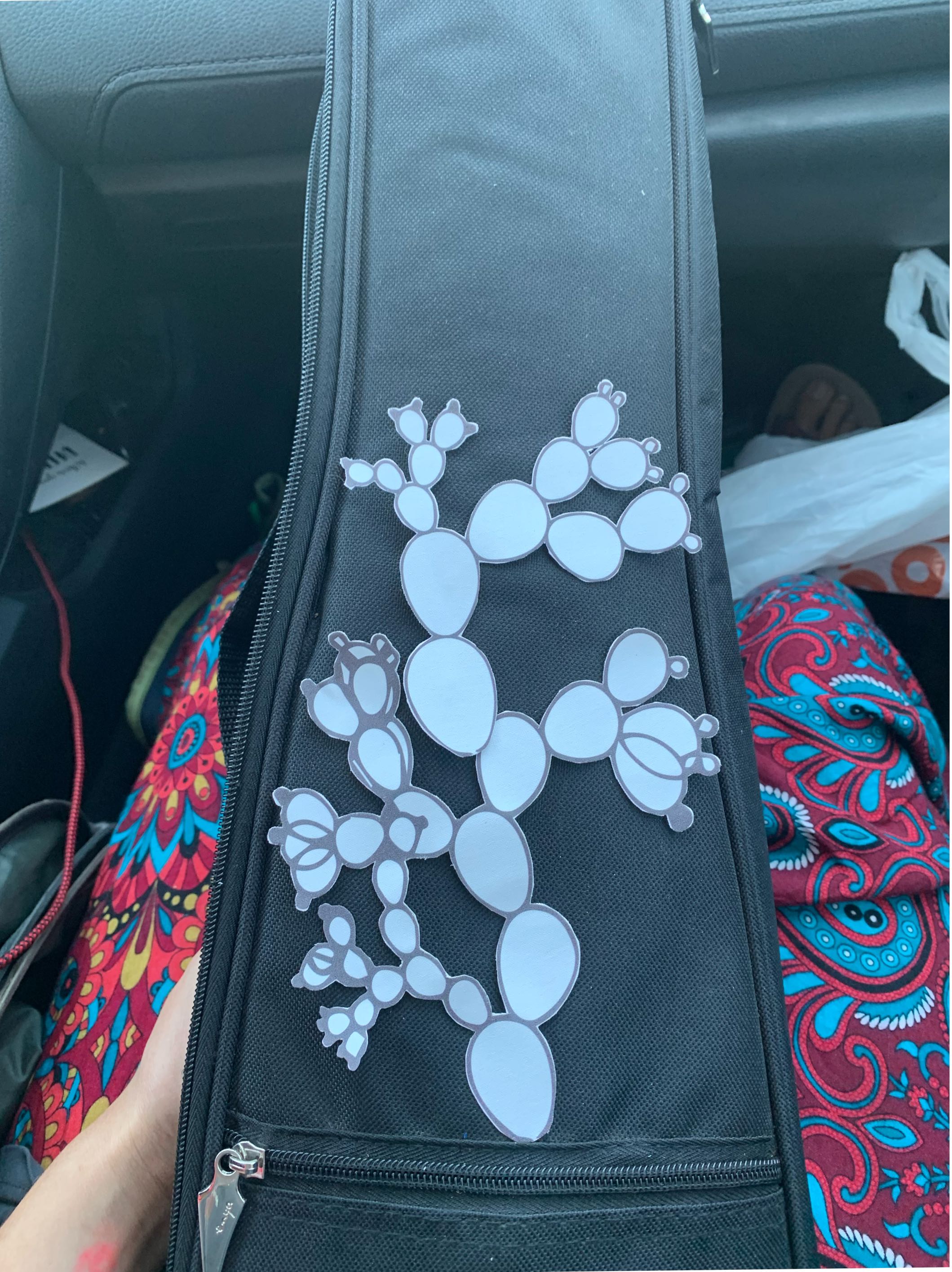
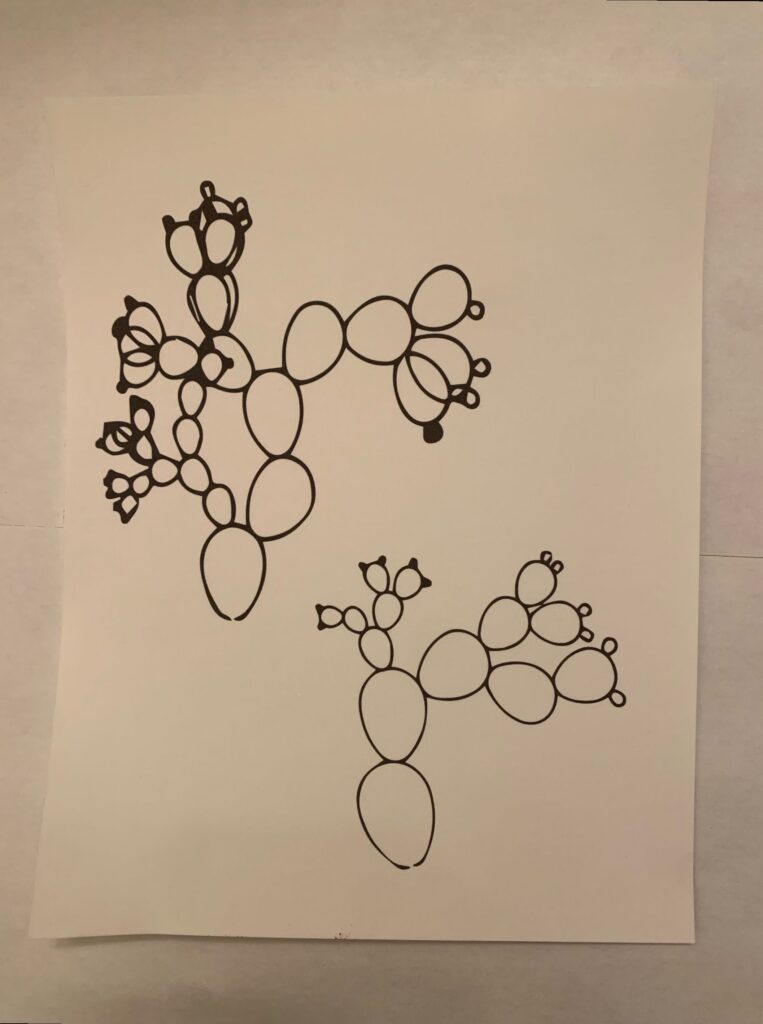
Turtle
1a. Since it is an approximate circle, and the turtle moves 1 step each time, the circumference can be measured as 360 turtles. Math tells us that the radius of a circle is r = c / (2pi), so r = 360/ (2*pi), which equals a radius of about 57.3 turtles.
1b. It is the same case as above, where the circumference equals 360 and radius is about 57.3 turtles. This is because the turtle moves the same distance that it turns, a 1:1 ratio making the same sized circle as above.
2. Since this makes a closed polygon, we know that all the exterior angles must add up to 360, or in this case, the exterior angles where the arc intersects with the line, and the total turning over the arc (because each turtle turn is an exterior angle):
(180-A) + (180-B) + (total turning over arc) = 360.
This relates the total turning over the arc to interior angles A and B, but we can simply further:
180 – A + 180 – B + ArcTurnTotal = 360
– A – B + ArcTurn Total = 360 – 180 – 180
– A – B + ArcTurnTotal = 0
ArcTurnTotal = A + B
Hi Lauren, what an amazing design with the prickly pear! I think you did an incredible job and I would be so curious to see your code. The embroidery turned out beautiful! WOw! I am truly impressed and inspired.
Hi Lauren!
I love your prickly pear cactus design! The shape of the cactus “leaves” is spot on. And the process of turning it into embroidery is inspired. I considered a similar project but decided against it because I knew it would take too long. I’m super impressed you decided to hand-stitch the design and I love the way it came out!
Hi Lauren,
I really like how you’re Prickly Pear Cactus turned out! Choosing to embroider, looks like it was definitely worth the 10 hours of work. The texture change made a huge difference.
best,
Daniel